My new year’s resolution this year was a fun one: go to more museums and galleries. It’s embarrassing that I’ve now lived in New York for seven years and there are so many famous museums I’ve still never visited! So a couple of weeks ago I came through on my resolution and went to the Whitney Museum for the first time. I loved it! It’s a nice size (five not-so-big floors), the building is cool (all thick concrete), and it wasn’t crowded at all on a Wednesday afternoon.
I started with their American Legends show, which features artwork from big names of the first half of the 20th Century. I haven’t studied much art history, so while some of it was very familiar or vaguely familiar, most of it was new to me. Paintings dominated, of course, but my favorite pieces were by Alexander Calder. If the name isn’t familiar to you, then certainly his work is.
Calder basically invented the hanging mobile, and his perfectly balanced pieces of orbiting shapes are iconic. I loved the delicate engineering of his mobiles and balancing sculptures, but my favorite pieces on exhibit were his kinetic circus toys.
When living in Paris in the 1920s, Calder created a cast of human and animal figures made of wire and scraps of other simple materials. Each of these toys could perform a trick of motion when manipulated by hand: a lion tamer snapped a whip, a dog walked around on its hind legs. Calder held entire mini circus performances in which he would get down on the floor and manipulate his modernist toys for audiences adults and children. (Back in New York, fans could book Calder’s circus through the Junior League at Saks Fifth Avenue.)
I love the humor and intimate interaction involved in these seemingly crude pieces.
The toys are works of art on their own, but they are meant to be moved by hand and experienced as a live performance. The Whitney has a film of Calder performing his circus in 1955, but I have a feeling that the poor quality doesn’t do the circus justice, and seeing it in person in the ’20s must have been a vastly different experience.
In the 1930s Calder moved on to focus on his wire sculptures and abstract pieces. But his playful, interactive circus strikes me as his richest artistic experiment.

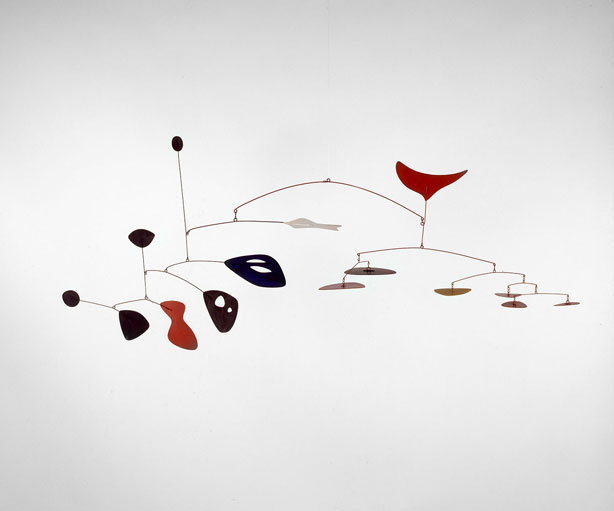
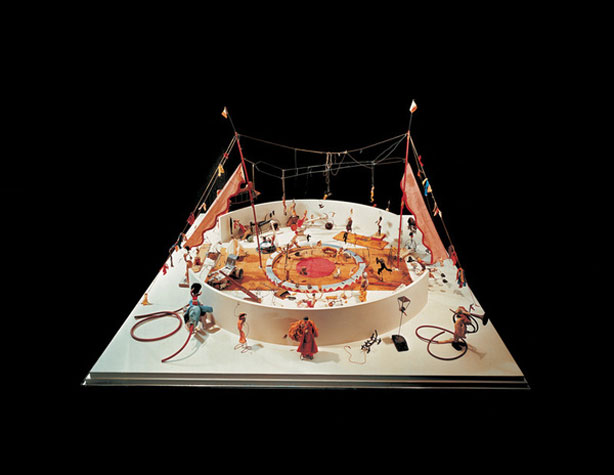
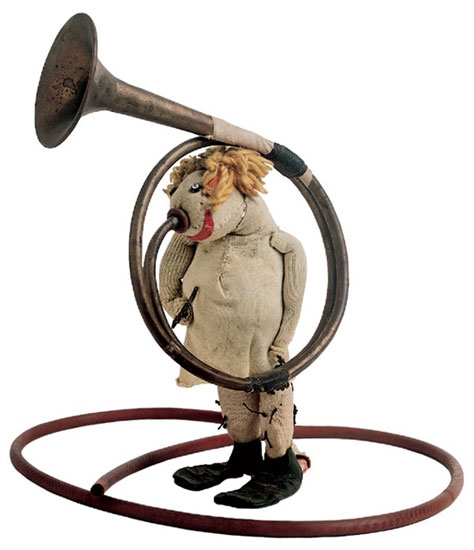
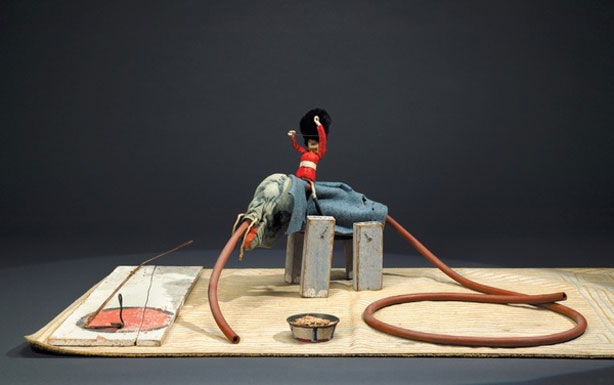
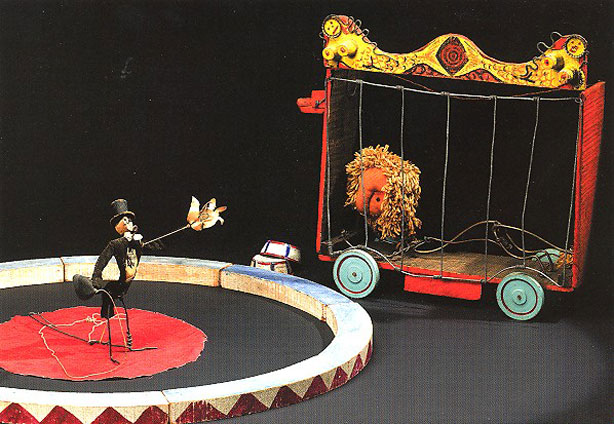
Calder was one of my favorite artists when I was studying art history. As someone who finds a lot of the modern art movement unfathomably pretentious, his art was accessible on a multitude of levels that allowed me to appreciate it without feeling like I was creating meaning whole cloth that might not have been the artists intent.
Yeah, I might have been scarred by interpreting the fur lined teacup way too many times.
How charming!
And seeing it in the ’20’s would have been a different experience as they didn’t have all the technology we do now.
If you doubt it, try explaining what is so great about Pong to someone under 20 or so today.
And I recommend the Folk Art Museum…that is my personal favorite (and they have a party on some Friday nights!)
Leslie, that’s a good point about how what people found entertaining in the 20s would have been different. But I like the idea that the live performance would still be captivating to me now. And the Folk Art Museum is one of the few that I have visited—in fact, I was just talking about going there again sometime soon!
Calder mobiles are so well balanced, you can JUST blow a stream of air out of your mouth and get them to move. Just becareful. the guard will chastise you and make you stop. (but there are always new guards, and I do it each time I go!)
I’ve never heard of Calder, but now I think I want to research more about him. I like his work, it’s very interesting.
Hey there, I was searching around for the botan candy sticker of the poolside penguin on the web and came across your blog post! I was wondering if A. It still exists and is unused and B. could I potentially buy it from you? My computer was stolen and the sticker had sentimental significance. Super silly request but if it still exists I’d love to nab one:)
Cheers
About a year ago or so the Seattle Art Museum had a wonderful Calder exhibit. My favorite part was that my 2 kids loved it as much as I did. My sciency-type son was so intrigued trying to figure out how everything balanced so well.
So ironic! i just started reading a book about calder!